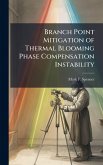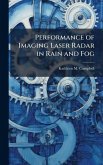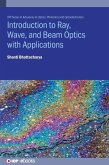This dissertation makes contributions towards knowledge of optimizing of laser weapon performance when operating in the air-to-ground (ATG) regime in thermal blooming conditions. Wave optics modeling techniques were used to represent laser weapon performance in a high fidelity sense to allow progress to be made toward improving lower-fidelity scaling laws that can be used in systems level analysis which has need for better representations of thermal blooming. Chemical-oxygen iodine laser (COIL) based weapon systems that operate near the ground will experience thermal blooming due to atmospheric absorption if output power is sufficiently high. The thermal lens in the ATG case is predominantly in the far-field of the optical system which puts the problem outside the envelope for most classical phase correction techniques. Focusing the laser beyond the target (defocus) in the air-to-ground regime is shown to improve irradiance at the target and can be thought of as reducing the thermal blooming distortion number, ND, rather than phase correction. Improvement is shown in a baseline scenario presented and all variations from it explored herein. The Breaux ND is examined for potential use in a defocus scaling law, and a correction factor due to Smith (1977), developed for a different context, is proposed to address deficiencies. Optimal defocus settings and expected improvement are presented as a function of Breaux ND. Also, the generally negative interaction between turbulence and thermal blooming is investigated and shown to further limit performance potential of ATG laser weapons. This negative interaction can impact the weapon design trade space and operational methods for minimizing the interaction and thermal blooming are explored in a case study. This work has been selected by scholars as being culturally important, and is part of the knowledge base of civilization as we know it. This work was reproduced from the original artifact, and remains as true to the original work as possible. Therefore, you will see the original copyright references, library stamps (as most of these works have been housed in our most important libraries around the world), and other notations in the work. This work is in the public domain in the United States of America, and possibly other nations. Within the United States, you may freely copy and distribute this work, as no entity (individual or corporate) has a copyright on the body of the work. As a reproduction of a historical artifact, this work may contain missing or blurred pages, poor pictures, errant marks, etc. Scholars believe, and we concur, that this work is important enough to be preserved, reproduced, and made generally available to the public. We appreciate your support of the preservation process, and thank you for being an important part of keeping this knowledge alive and relevant.
Bitte wählen Sie Ihr Anliegen aus.
Rechnungen
Retourenschein anfordern
Bestellstatus
Storno








